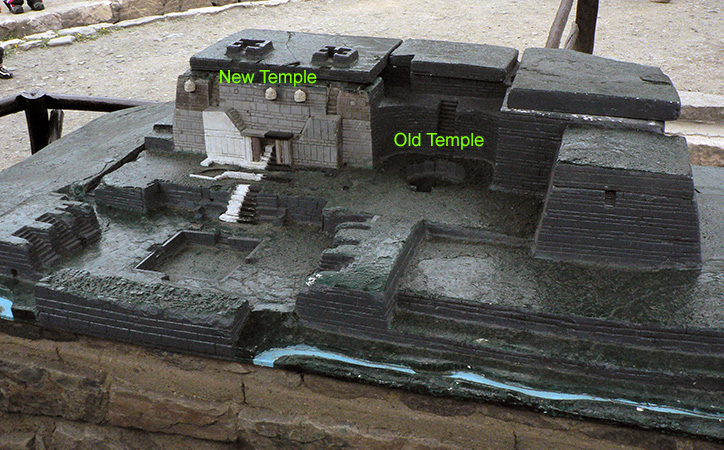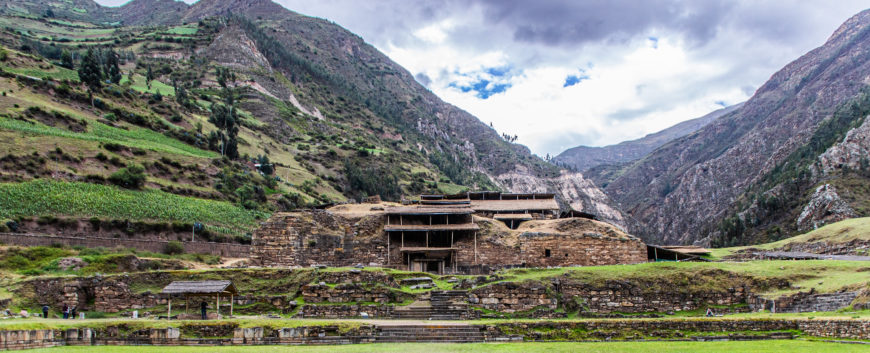Anthropology
Related: About this forumArchaeologists discover passageways in 3,000-year-old Peruvian temple
Last edited Tue Jun 7, 2022, 07:10 PM - Edit history (2)
May 31, 2022
9:15 AM CDT
Last Updated 7 days ago
By Carlos Valdez
1 minute read
LIMA, May 30 (Reuters) - A team of archaeologists has discovered a network of passageways under a more than 3,000-year-old temple in the Peruvian Andes.
Chavin de Huantar temple, located in the north-central Andes, was once a religious and administrative center for people across the region.
The passageways were found earlier in May and have features believed to have been built earlier than the temple's labyrinthine galleries, according to John Rick, an archaeologist at Stanford University who was involved in the excavation.

Located 3,200 meters above sea level, at least 35 underground passageways have been found over the years of excavations, which all connect with each other and were built between 1,200 and 200 years B.C. in the foothills of the Andes.
More:
https://www.reuters.com/world/americas/archaeologists-discover-passageways-3000-year-old-peruvian-temple-2022-05-30/
~ ~ ~
Older article:
Chavín de Huántar: the enigmatic temple of the Peruvian Andes
By monica-December 4, 2019

Among the imposing mountains of the department of Áncash, in Peru, there is an enigmatic place that hides a very important part of pre-Inca history. This is Chavín de Huántar , an archaeological complex built by the Chavín culture, more than 2,200 years ago. Keep reading and you will know all the details of this exciting place.
What is Chavin de Huantar?

Chavín de Huántar is an archaeological complex built by the Chavín culture between the 2nd and 1st centuries BC and used until 200 BC. C., when it was abandoned. This impressive place is located in the foothills of the Andes mountain range, at the point where the Mosna and Huacheqsa rivers meet.
The archaeological complex of Chavín de Huántar is the most important in the department of Áncash, in central Peru. This great architectural work had two temples, of which some of its parts are still preserved and in which you will find a mysterious network of labyrinths to lose yourself and feel like a true explorer.

Cabeza Clava in the Chavín de Huántar archaeological complex.
In addition, Chavín de Huántar has ancient and very curious sculptures, among which the monolithic sandeel, the Raimondi stele, the Tello obelisk and the nice nail heads stand out. Some works of art that will leave you speechless!
The exciting history of Chavín de Huántar

More:
https://www.denomades.com/blog/chavin-huantar-enigmatico-templo-andes-peruanos/
~ ~ ~



Model:


Interesting article, with details of construction of the temple, and a short video, 2:55 minutes, showing walking around in the underground tunnels:
Chavín de Huántar
by DR. SARAHH SCHER

Archaeological site of Chavín de Huántar (photo: Apollo, CC BY 2.0)
Chavín de Huántar is an archaeological and cultural site in the Andean highlands of Peru. Once thought to be the birthplace of an ancient “mother culture,” the modern understanding is more nuanced. The cultural expressions found at Chavín most likely did not originate in that place, but can be seen as coming into their full force there. The visual legacy of Chavín would persist long after the site’s decline in approximately 200 B.C.E., with motifs and stylistic elements traveling to the southern highlands and to the coast. The location of Chavín seems to have helped make it a special place—the temple built there became an important pilgrimage site that drew people and their offerings from far and wide.
At 10,330 feet (3150 meters) in elevation, it sits between the eastern (Cordillera Negra—snowless) and western (Cordillera Blanca—snowy) ranges of the Andes, near two of the few mountain passes that allow passage between the desert coast to the west and the Amazon jungle to the east. It is also located near the confluence of the Huachesca and Mosna Rivers, a natural phenomenon of two joining into one that may have been seen as a spiritually powerful phenomenon.
The temple complex
Over the course of 700 years, the site drew many worshipers to its temple who helped in spreading the artistic style of Chavín throughout highland and coastal Peru by transporting ceramics, textiles, and other portable objects back to their homes.
More:
https://smarthistory.org/chavin-de-huantar/
Also posted in Anthropology:
https://www.democraticunderground.com/12298170